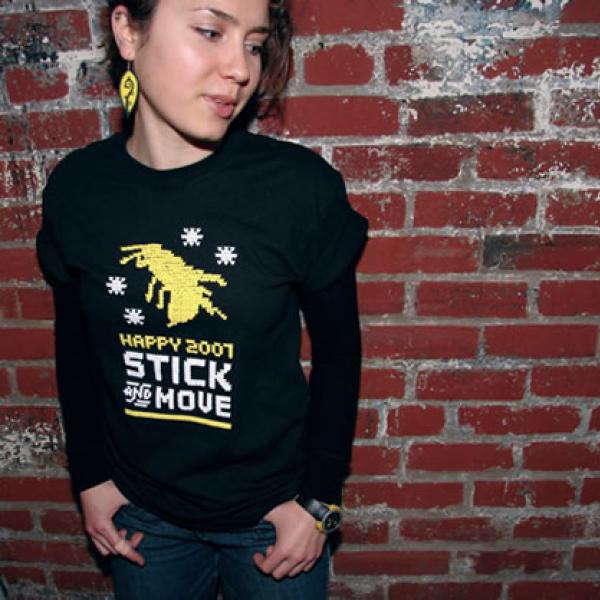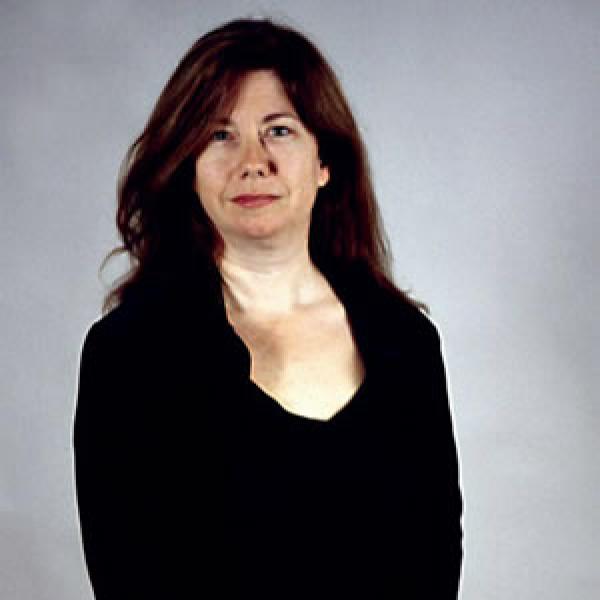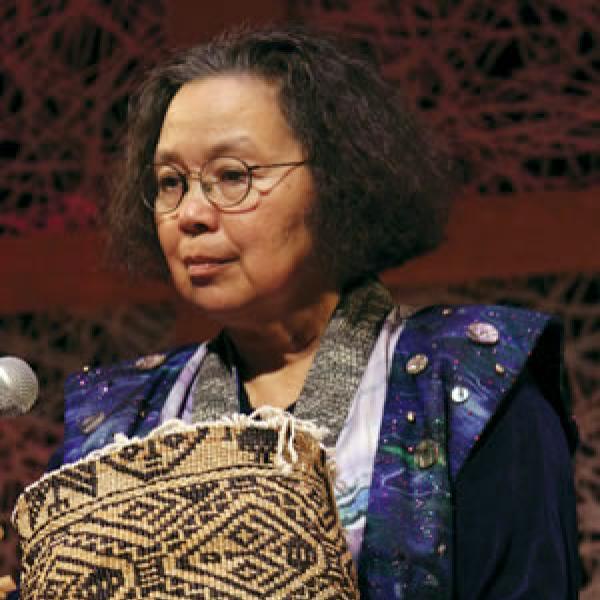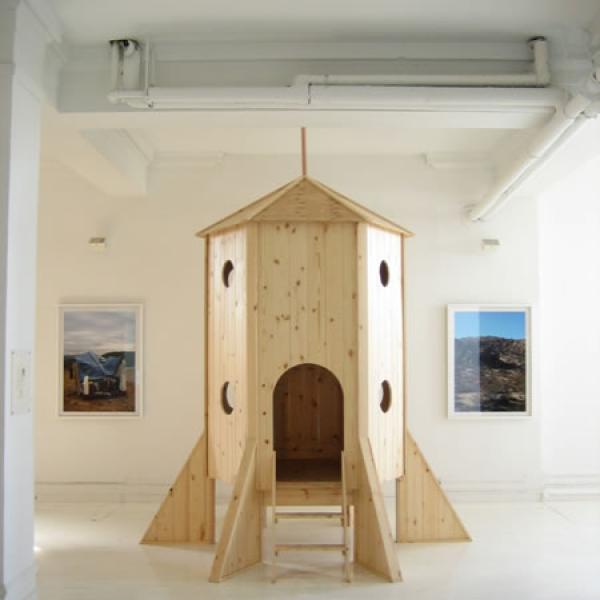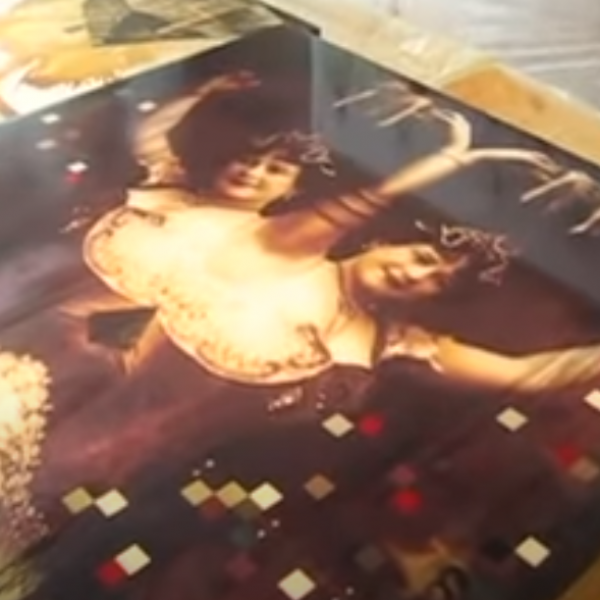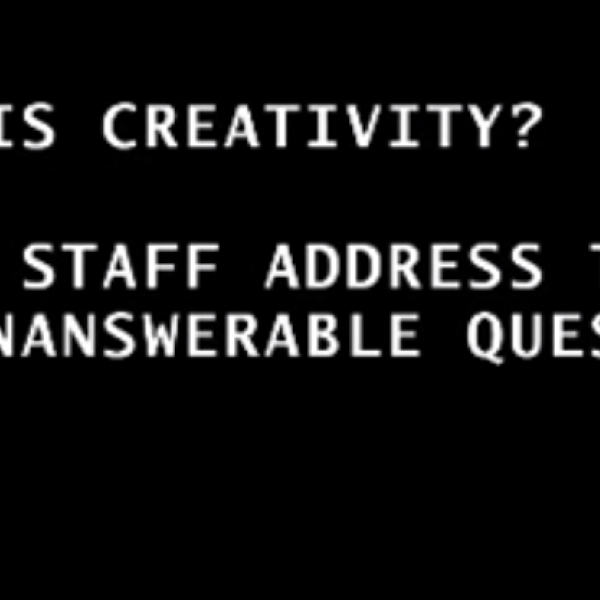No One Can See Like I See

Untitled (Painter), 2009, by Kerry James Marshall from the collection of the Museum of Contemporary Arts in Chicago. Photo by Nathan Keay/Museum of Contemporary Arts
In June 2010, Chairman Rocco Landesman made an Art Works Tour visit to the Windy City -- Chicago, Illinois. One of the events he attended was a symposium at the Museum of Contemporary Arts, where local artists and arts organization representatives discussed the importance of art, how the arts integrate into the community, and the importance of failure in creating art. Two of the participants were visual artist Kerry James Marshall and actor/writer/director Cheryl Lynn Bruce.
We asked Madeleine Grynsztejn, director of the Museum of Contemporary Arts in Chicago, to talk with the husband and wife artists Marshall and Bruce about creativity, productive failure, working together, and other interesting topics. Below is an excerpt from their talk about creating an environment for creativity to flourish. This is the full edited interview.
Madeleine Grynsztejn: Kerry and Cheryl, I think what first got Rocco’s attention was the way in which you both talked about “productive failure.” Could you talk more about what that means?
Cheryl Lynn Bruce: I’m participating in a play reading workshop where a play that’s in process, in development, is being read and discussed and analyzed over a three-day period. The writer is in the room and the director, and actually the people who were cast in the show…. I find myself challenged and fed by other people’s experiments, efforts, and failures because over the span of three days, we’ll get drafts of new pages, and even during the reading, we’ll have edits. So I can watch the writer and the director and the actors because they’re all in conversation. I can see the piece being shaped and pruned and edited and redirected and I can learn from that process.
Grynsztejn: So is it an artistic working process that you like? As opposed to sitting in the room by yourself?
Bruce: Well, as opposed to being a “chess piece” because that’s how some directors work: “Go here. Go there. Pick this up. Do this bit of business.” But the give and take, the push and pull of shaping a piece collaboratively and actually making mistakes is important.
Grynsztejn: Do you think there’s a component of it that’s interesting to the public?
Bruce: I do. I do, and that’s one reason I, as a theater-goer, like to go see previews because previews are where it’s not finished. The director still has a hand in shaping, and all the technical elements are still being tweaked. The actors may or may not have their lines down tight. The blocking might be less accurate. . There might be set pieces that are not there when the show opens two weeks later…. But I can get to see whole scenes rethought and redirected, costumes changed, music added or eliminated. It’s thrilling to see that.
Grynsztejn: So both as a viewer and as an artist, it’s satisfying on all those fronts.
Bruce: For me, yes. I learn from mistakes, even when the final decision is not a satisfactory one in my estimation.
Kerry James Marshall: There’s a dangerous notion afoot that miraculous things or amazing things just happen, and that talents and abilities and skills are available to some people but not to other people.
Grynsztejn: The traditional concept of the creative genius.
Marshall: Right, the creative genius, the special people who have this innate sort of ability to perform and to make and to do things, and the things they do come easily to them. And so because of that a lot of people who might, over time, develop really amazing and really important things, are stopped before they get started. But because they believe they weren’t born with this special gift or with this special talent, then that’s not something for them. And I think sometimes the schools encourage this idea. If you don’t have it, then you get to go down this channel. The people who do are given all of the advantages that help to make cultivating the skill and the abilities they do have easier.
Where we’re talking about creativity, we’re talking about a level of intellectual engagement that a lot of those events or those gestures don’t require. And so maybe those don’t constitute creativity, per se, because you can trip and fall in an elegant way and I wouldn’t say that that was a creative act necessarily.
It’s like, when you think about the way Instamatic photography became available to everybody who could afford to get a camera. Now, the quantity of really amazing and great photographs didn’t just increase exponentially because everybody was out there shooting pictures. That’s not the case. And so it’s the same kind of thing. There are a lot of people taking pictures. There are lots of people doing things, a lot of people posting stuff because the technology makes it easy for people to do it.

Cheryl Lynn Bruce (left) with Wandachristine in the Writers' Theatre production of John Henry Redwood's The Old Settler in Chicago, Illinois. Photo courtesy of Writers' Theatre |
Grynsztejn: Does that make it harder to identify what one considers important art?
Bruce: I think the sheer volume of what’s out there, the exponential increase in the volume of sensory stimuli that’s out there does, in some ways, confuse our ability to assess value. I think that we also get into an area where performance is not supposed to be as formal as one might find in a theater. So this performance on the street corner is in some ways assumed to be worthwhile as something that’s in the MCA’s theater or downtown. And so the question becomes: “Are they both of comparable value or import?“
Grynsztejn: You just made me think of the difference between what happens inside a museum or a theater, and what happens on the corner. Can you both talk, each in your own way, about what happens to your work, what happens to you as an artist, when you work inside an institution and then when you work outside of it in the community?
Marshall: Well, when you think of the museum or the theater or the cinema, these are authorizing frames. And the people who are invested in those institutions—
Bruce: Literally and figuratively.
Marshall: Literally and figuratively invested in those institutions also believe that they confer a certain amount of value on anything that enters into that space. This is prior to any kind of process of analysis or evaluation. So anything that occurs within a space is given the benefit of the doubt, that it has already been vetted and/or filtered through a certain kind of intellectual process. And so for me as an artist working in the museum, because I’m aware of that, because I’m a part of that institutional world, and because I approach the things that I do with that intellectual investment, I take a certain amount of pride and responsibility in being able to engage the expectations of the people who are invested in the institution as well. But if I go outside the institution and I’m in what people will call “the community” or the outside world, the real world, I have no expectation that anybody I encounter out there is going to have the same expectations of what I do, or give the same deference to what I do, that the people who are inside the museum might.
Grynsztejn: Is that why you turned things on their head a little by turning the exhibition you did here at the MCA Chicago into something like a laboratory experiment for other people’s work?
Marshall: Well, that’s one of the things I was thinking about. But the other thing I was thinking of has to do with the first question, which was about productive failure. Because in both those instances, there are certain professional expectations that attach to you when you achieve a certain status. You can constantly struggle to manage that, maintain that level, or you could work to confound it in one way or another. Now, when you confound those expectations, you run the risk of completely undermining your legitimacy and your authority, but if it all works out really well, then you open up space for freedom where you can explore a lot of things that your success might not give you the freedom or the comfort to do.

A Bunraku puppet by Kerry James Marshall for a theater performance at the Wexner Center for the Arts in Columbus, Ohio, that he worked on with his wife Cheryl Lynn Bruce. Photo by Cory Piehowicz |
Grynsztejn: Cheryl, what about you? What about working inside an institution versus inside a community? How does that change your work as an artist, and how does that, in your view, change your product, your offering?
Bruce: I use my 12 years working in the community heading a summer program for boys and girls in Bronzeville as a journal. I went in with one set of expectations, but over those dozen or so years, the community and the participants and the staffers and program partners taught me some things different from what I had expected to learn…. The community and the participants became much more important as guides in terms of how the performance piece should work, what issues the performances should address, even how the program should be run. I became aware of the importance of knowing what was happening in the lives of the participants because I came to understand that that was much more important and immediate. So anything that dealt with that or that could incorporate their lives on an immediate basis was much more valuable….Working in an institution, in a theater, there’s already a game plan that’s set. We know the parameters: the day we’re going to start work, the script, the players, we know all of that. And there’s a certain expectation that the finished product is going to look a certain way and going to be a certain thing. There’s a kind of shared authority in the community situation because I’m hired in. I’m a hired gun.
The audiences that we had for our summer program were incredible because it was the final day of the program and there was a big show and stipends, and awards and everything. The audience was family and friends and community, and it was all free. And one year, Kerry worked with some young people and they made a video documentary and that was really important. I remember the night of the big show, and the video was the beginning of the evening. And there was this kind of low-grade roar when the kids saw their friends and buddies on the screen. That’s why they were even there, and the parents saw their children and it was a beautiful thing. They were going to see their children later on in the evening in the performance, but they saw them in another medium, you know, ‘cause we all see screens a lot now with phones, televisions, video, computers. And it was through that medium that the community was connected to what was happening on stage and on screen, too.
Grynsztejn: You mentioned that you worked together on this. Are there projects that the two of you have worked on as a team?
Marshall: Well, the project I did for the Wexner Center for the Arts is one thing, but we worked together before…. [it was] a theatrical performance based on Japanese Bunraku puppetry. Cheryl was the director for the performance. I wrote the script. I made the puppets. I made the sets.
Bruce: But we talked about the script. We conferred on the script and just a whole lot of stuff…. applying the Bunraku techniques used in ancient Japanese puppet theater. Those techniques and rules are very specific. The set was formalized but Kerry’s synthesizing his urban comic performance with Bunraku was just thrilling. He made some artistic choices that stretched the formal boundaries, which I thought were fine, and introduced a young urban audience of teens and adults from across metropolitan Columbus, Ohio, to a story that they found totally engaging. In fact, at the end of the project, even before the project was over, they were asking Kerry, “Well, what happens to this character?” and “What happens to that character?”
Marshall: If we stay close to the idea of creativity, the two of us are describing the two different modes of creative activity we’re engaged in. And I think it’s important to recognize something that Bruce Mau said when I had a conversation with him one evening…. The difference between what he did as a designer and what I did as a visual artist [is] that he was in a pull economy and I’m in a push economy, in the sense that he doesn’t do anything unless somebody gives him a project to do. I work all the time whether people ask me to do anything or not. So I’m driven to keep producing and exploring and investigating, and I’m always seeking as opposed to responding to the needs and interests and direction of other people. So between Cheryl and I, that’s that same kind of an economy I think operates between the way an actor performs and operates in the theater and I do in my studio. She has to be cast in a play to set her processes in motion on that thing.
Bruce: Which is why I try and find directing jobs or write because I’m at a point in my career where people cast me or make offers but I find that I’m not as intrigued by projects as I want to be. The kind of projects I’m hungry for, I realize from being with Kerry, are projects that I have to make for myself because no one can see like I see…. But the conundrum is to find the mental space and time to create or even have the mental space to think about what to create. I don’t have a studio to go to as Kerry does, which I think is so important for an artist, to really get away. I know people do write at home, but I can’t seem to extricate myself from the quotidian. I do best when I’m out of the house, but the challenge remains to make the kind of work I want to be in and that’s where I am now. I’m getting offers, so I’ll do this job, I’ll do a workshop, I’ll do a play, but I would really like to have the luxury of not doing anything for somebody else. But some of the projects are really exciting, so I still want to do those.
Grynsztejn: One of the things that Rocco was really taken with, that both of you said in different ways, is this notion of how do you continue to “break through.” How do you continue to break through when you are at a point in your careers where you are already known? You have both achieved enormously and you are known for certain things and certain things are expected of you. Can you each talk about how you continue to operate creatively when there’s a kind of pressure for you to remain the same, when your success has posited certain parameters?
Marshall: It goes to what I was saying earlier… about these expectations that creative acts just happen. They’re almost like little miracles or magic of some kind, that they are not the product of intellectual engagement and hard work and labor. Creativity is a formal exercise of the will, but it also has to be supported somehow. It has to be financed. And so if you can’t get the resources to do some things, then your imagination doesn’t even go in the direction that those things might lead you. And so there are limits imposed on your ability to be creative. At the same time, that creativity is itself a device for breaking through limitations. It’s a way of going beyond. It’s the idea of going beyond. But the truth is that when you don’t have the resources to do certain things, then you don’t even begin sometimes. So the thing that rarely gets talked about is that it costs a lot to be forever seeking and pushing the boundaries. And if you’ve achieved a certain professional standing, and with that comes the kind of monetary rewards that allows you to be continue to be productive, there’s something to think about if you’re going to put all of that on the line, because your wellbeing, even your livelihood could depend on it. And so it’s one of the reasons why I think so few artists do the kind of thing that Picasso got so much credit for doing, which is constantly changing….You’re compelled sometimes to continue to do the thing that everybody expects you to do.
I’m incredibly conservative when it comes to economics because what I saw myself doing with the success I’d achieved in the marketplace was buying myself the space to be able to do what I wanted to do later…. to push the boundaries as far as I think I really want to go. My lifestyle is not extravagant. I don’t need a lot of luxuries because I’m conserving the resources I have to buy time to be able to imagine things that I think are way beyond where I have been able to get to right now.
Grynsztejn: Cheryl, what about for you? Your situation is very similar. You’ve reached a professional standing and a stable reputation. How do you still push through, and is that professional stability and reputation a burden or a boundary, or not?
Bruce: Our disciplines in some ways are so different. I’m a performer, I’m a director, and I write. In my trade, the particularities come to bear in an important way. I have a race. I have a sex. I have an age. I have time that I’m dealing with. In a way, Kerry doesn’t have that. I mean, Picasso, Matisse, painters, sculptors, they can work until they can’t work. Chuck Close is in a wheelchair--he’s still working. But there are not that many actresses in wheelchairs that get work, or actors. So those kinds of things are real issues and sometimes “risk” is less an issue than “opportunity.”
What Kerry talks about—being in a position to buy time and space--is such a luxury, but it’s so important because things can happen without thought. I don’t think good things happen without thought and that’s what that time and space buys. It doesn’t mean everything you think is going to be great, but it means you can sit back and think and maybe read, and that is what I was alluding to when I was talking about technology and putting stuff out there half-baked or half-assed, because that’s a temptation that often preempts thought.
Marshall: Still, it’s more than just the time to be able to think. The space is actually the space to do and to do again and to do again and again and again. Because that’s where the work of creativity really takes place; it’s like when you do it again, when you do it different because you saw something the first time that you wanted to amplify or something that you wanted to modify or diminish in one way or another. That’s where creativity is. It’s in the doing and doing again. And that’s why I say it’s an act of will. Having the space to do and do again is as valuable as space to just simply think about.
Bruce: Yes, but here’s the difference in our trades. The classic arts can be a solitary pursuit. In performance, most performers don’t feel they’re doing much without an audience. An audience is the important ingredient….Performance needs collaborators and the classic arts don’t necessarily have to have that.
Grynsztejn: We’re talking about productive failure. You’ve defined creativity as the formal will to go beyond. Productive failure means you didn’t succeed somehow. Success, especially commercial success, is not always creative and it’s not always groundbreaking. So what happens when you go too far? What happens when, in your creative efforts, you get ahead of the audiences that you both need, in terms of their understanding and their capacity to embrace your work--and it “fails productively?”
Bruce: I think people do different things. Some people, they shutter that effort and put it aside and return to it at a later date.
Marshall: Well, but there are a couple of different ways to look at it, though. On the one hand, depending on your situation, it may not matter what the audience’s reaction to it is at a given time, because you’re well enough resourced and situated that you could continue on your way to whatever it was you were looking for independent of the commercial ramification.
What often happens--and a number of people have spoken about it, a number of musicians speak about it, too--is where they do the thing called “woodshedding.” They remove themselves from public performance and rework whatever it was they were aiming at.
Grynsztejn: Toward what end? Toward connecting with the audience?
Bruce: Ultimately.
Marshall: But we have multiple audiences that we have to deal with. There’s an audience of professionals who are like you--there are other people who know what you know. And so you play for them. You perform for them. I make pictures for them. That’s one of my audiences. And I want a response from them, too, because that response is a response that may satisfy me more critically, intellectually, and professionally. And that’s aside from popular success amongst the larger group of people who may be invested in some aspect of your personality or, the people who like you, things like that.
Bruce: The people for whom you represent something.
Marshall: The people, yeah, for whom you represent something, but who don’t engage you on that critical intellectual level. There are multiple audiences you have to address and engage all the time. I don’t think there’s ever a time when you’re not engaging with all of those various audiences.
Grynsztejn: Does it matter to you when you get ahead of the response? Does it matter to you when your creativity breaks through and no one’s caught up to you yet?
Bruce: I don’t know if it’s “No one’s caught up to me yet.” It might just be a failure.
Grynsztejn: How do you know?
Bruce: You don’t always know right then. That takes time, too.
Marshall: As human beings, you can never get too far out for one thing, and I don’t think you can ever get too far out for other human beings. I mean, all of us who are engaged in a creative life, even if it’s as a lifestyle or if it’s as a career choice, are part of a profession. There are already precedents that set a certain set of standards for what we think is good. So part of what we’re doing when we engage in our activities is to answer the question “What is good?” That’s a philosophical question, but it also has a material--
Bruce: Commercial concern.
Marshall: Well, yeah. There are practical and physical and material manifestations of this thing called “the good” as well. And when we believe ourselves to be pushing the boundaries of something and/or going beyond anything, we’re going beyond limits of acceptability that we already understand other people have as a part of their knowledge base, too. And so we’re always engaged in a conversation with other people who were invested in this thing that we’re invested in as well.
Bruce: They’re in the studio. They’re in the rehearsal hall, too. Even though they’re physically not there, they’re there in the corner looking over your shoulder and you know that, you know their voice is there.
Grynsztejn: Kerry, are there things that happen in Cheryl’s world on stage that inform your work?
Marshall: There’s an aspect of what I do that is theatrical as well. When I’m making a picture, I’m composing, I’m casting, I’m set dressing, I’m lighting, I’m staging a narrative if I’m doing a narrative. Or if I’m doing something that’s simply emblematic or totemic, I’m still staging. And so the great impulse toward communication I think between people requires a lot of these things that we have formalized into art practices; like the theater is just an exaggeration maybe or an institutionalization of certain kinds of storytelling practices that people were engaged in before there was a stage to stand on.
Bruce: Yes, and I find that staging is ultimately making pictures with living bodies. I got interested when Kerry first told me about the “lines” in pictures, the architecture of pictures and how figures fit into a certain pattern; I just knew that when you situate bodies on a stage in certain ways, certain understandings happen automatically. The eye just computes some stuff and the brain does some stuff and you don’t have to say a word. You just know immediately--by the position of the person and the direction of the gaze, or the elevation--a lot of things, a lot of information. The stage can be bare but you know immediately a figure is the most important person on the stage even though he might be way upstage in the back and very small or something. So there were rules of engagement that I understood as a part and parcel of a director’s stagecraft that I was surprised to learn were operational in the composition of paintings.


